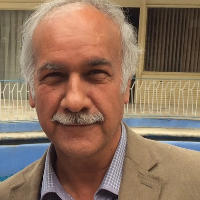An Explanatory study on the Troll phenomenon among Iranian Facebook Users
Author(s):
Abstract:
Introduction and statement of problem: Troll, or more precisely, Rage Comic (RC), is a newly born phenomenon in cyber space, which we identify as an Alternative Media (AM). RC offers Jokes and comical cartoons; representing ideas, points of view, beliefs, or social facts. Furthermore, RC is an opportunity for a specific social practice; derive from individuals’ social experiences and perceptions. Thus, the importance of the present study lies in the fact that one can express through this AM, what cannot be expressed through main-steam communication channels. Although, there is a complicated interrelation between New Media (NM) technologies and their former peers, it can be perceivably assumed that “each form of NM, necessarily, is the result of its predecessor forms’ development and conformation”. In RC, these technical forms consist of: 1) comic strip/cinema/story board, 2) Cartoons, and 3) joke (lingual irony). Theoretical Considerations: Troll as an AM enables users to share whatever they think, and as Walz (2005) points out, these are the media who have come to being oppositional to other media products. However, Chris Atton (2002) does not accept the conception of “non-mainstream” as sufficient definition, and thus recognizes six characteristics in radical and alternative media’s typology: “1) Content (politically radical, socially/culturally radical); news values, 2) Form – graphics, visual language; varieties of presentation and binding; aesthetics, 3) Reprographic innovations/adaptations – use of mimeographs, IBM typesetting, offset litho, photocopiers, 4) ‘Distributive use’ – alternative sites for distribution, clandestine/invisible distribution networks, anti-copyright, 5) Transformed social relations, roles and responsibilities – reader-writers, collective organization, de-professionalization of e.g., journalism, printing, publishing, 6) Transformed communication processes – horizontal linkages, networks.”These characteristics sufficiently demonstrate AM’s innovative tendencies in utilizing New Media’s tools. Furthermore, AM is put to work by minority and opposing groups, who are, in effect, either less represented in main-stream media, or their representation involves stereotyping. This fact motivates their innovative usage of New Media. As Lievrouw (2011) points out, AM not only reflects and criticize mainstream media, but also combines and manipulate them.
Methodology
In this study, 128 RC uploaded on a Facebook page – one of the most popular containing similar Persian contents – has been analyzed. These comics were posted during a week - from 17th to 24th of June 2012 that according to a report provided Facebook; the page was visited the most. In addition, according to the same report, this page’s audiences consists of 18 to 24-year-old youngsters, from whom, boys constitute the greater portion.Because this phenomenon is somehow new and unexamined, we have adopted an exploratory method to our description and analysis. Accordingly, our approach consists of two major waves; in the first wave, each case was analyzed separately to the point of exhausting all its technical forms. In the second wave, contrasting the technical forms developed from the first wave to the contents, leaded us to some frequent “subject matters” and “points of view”. Lastly, we show that a specific dualistic view – that of real and imagination – is one of the most effective points of view in formation of RC, and it can be traced in almost all its cases.Findings and Results
We have attempted to argue that RC is an AM, and thus transcend its users from the masses by our conception of AM. It seems obvious that arguing the activist nature of users of any media depends on an argument indicating the users form a consistent social group. Therefore, we were left with a bilateral approach. On the one hand, we had to show that RC users constitute a specific social group that can be recognized objectively and, thus, their construction is more than construction of a users group. On the other hand, we had to show that the mediated social act that constitutes the users as a group, expresses more than just a subjective, unique aspect of its creator. We are aware that none of these two approaches alone can be sufficient to argue for a consistent social group, but we hope to have developed a strong and enough argument for our purposes.As mentioned above, the present study is an exploratory attempt to RC practice. The analysis has been presented in two parts. In the first part, we have classified RC’s techniques in three main categories (lingual techniques, cartoon, and comic strip), each of which consists of several subcategories. In the second part, contents and messages of studied RCs have been presented in five categories: Trolling, social criticism, norms and maxims along with forthright criticism, and real/imaginary dualism in trolls, last of which is heavily depended to our analysis in the first part of the paper.Keywords:
Language:
Persian
Published:
Global Media Journal - Persian Edition, Volume:9 Issue: 18, 2015
Page:
197
magiran.com/p1392745
دانلود و مطالعه متن این مقاله با یکی از روشهای زیر امکان پذیر است:
اشتراک شخصی
با عضویت و پرداخت آنلاین حق اشتراک یکساله به مبلغ 1,390,000ريال میتوانید 70 عنوان مطلب دانلود کنید!
اشتراک سازمانی
به کتابخانه دانشگاه یا محل کار خود پیشنهاد کنید تا اشتراک سازمانی این پایگاه را برای دسترسی نامحدود همه کاربران به متن مطالب تهیه نمایند!
توجه!
- حق عضویت دریافتی صرف حمایت از نشریات عضو و نگهداری، تکمیل و توسعه مگیران میشود.
- پرداخت حق اشتراک و دانلود مقالات اجازه بازنشر آن در سایر رسانههای چاپی و دیجیتال را به کاربر نمیدهد.
In order to view content subscription is required
Personal subscription
Subscribe magiran.com for 70 € euros via PayPal and download 70 articles during a year.
Organization subscription
Please contact us to subscribe your university or library for unlimited access!


